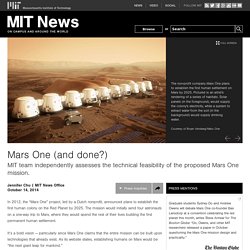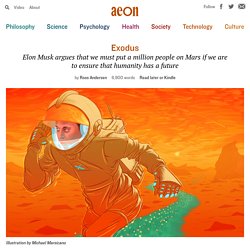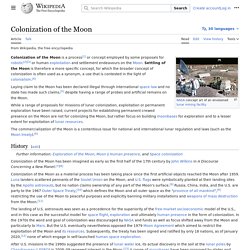

NASA researchers are working on a laser propulsion system that could get us to Mars in 3 days. Despite how far we've come in space exploration, one thing still holding us back from interstellar travel is our slow spacecraft.

While we're able to propel particles to close to the speed of light in the lab, we're struggling to even accelerate spacecraft to beyond 3 percent of that. With our current technology, it's estimated it'll take humans around five months to reach Mars. But NASA scientist Philip Lubin is working on a system where lasers propel spacecraft with giant sails to the Red Planet in as little as three days. Much like Bill Nye's much-hyped solar sail, this 'photonic propulsion' system relies on the momentum of photons - particles of light - to move forward. How Many People Does It Take to Colonize Another Star System? Back in 2002, John Moore, an anthropologist at the University of Florida, calculated that a starship could leave Earth with 150 passengers on a 2000-year pilgrimage to another solar system, and upon arrival, the descendants of the original crew could colonize a new world there—as long as everyone was careful not to inbreed along the way.

It was a valiant attempt to solve a thorny question about the future of humans in space. The nearest star systems—such as our nearest neighbor, Proxima Centauri, which is 4.2 light-years from home—are so far that reaching them would require a generational starship. Na Marsu je voda. Tekoucí a hodně slaná, oznámila NASA. AKTUALIZOVÁNO | Echo24 Přelomový objev Témata: Mars, NASA, Vesmír.

Colonization of Mars. An artist's conception of a human Mars base, with a cutaway revealing an interior horticultural area The colonization of Mars refers to the concept of humans setting out to live permanently on Mars.

Originally a science fiction idea, it is now the subject of serious feasibility studies. Relative similarity to Earth[edit] Earth is similar to its "sister planet" Venus in bulk composition, size and surface gravity, but Mars's similarities to Earth are more compelling when considering colonization. These include: Differences from Earth[edit] Conditions for human habitation[edit] Conditions on the surface of Mars are closer to the conditions on Earth in terms of temperature, atmospheric pressure than on any other planet or moon, except for the cloud tops of Venus,[11] but are not hospitable to humans or most known life forms due to greatly reduced air pressure, an atmosphere with only 0.1% oxygen, and the lack of liquid water (although large amounts of frozen water have been detected).
Elon Musk Says We Could Terraform Mars By Dropping Thermonuclear Bombs On It. Elon Musk has made no secret of his desire to get humans to Mars with his SpaceX company, but in an interview with Stephen Colbert last night, he took things one step further: He suggested it could be possible to terraform Mars by dropping thermonuclear bombs on the ice at its poles.

“Eventually you could transform Mars into an Earth-like planet,” he said on The Late Show (video is viewable from the U.S. only), adding that there were two ways to do this. “The fast way is drop thermonuclear weapons over the poles,” he said, leading Colbert to brand him a supervillain. “Superman doesn’t say we’ll drop thermonuclear bombs, that’s Lex Luthor!” Said the host. Musk added that the slow way would be to release greenhouse gases, like what is happening on Earth, to warm it up. Mars One (and done?) In 2012, the “Mars One” project, led by a Dutch nonprofit, announced plans to establish the first human colony on the Red Planet by 2025.

The mission would initially send four astronauts on a one-way trip to Mars, where they would spend the rest of their lives building the first permanent human settlement. It’s a bold vision — particularly since Mars One claims that the entire mission can be built upon technologies that already exist. Mars One. Mars Exploration, Astronauts on Mars & 50 Years of Human Spaceflight. Humanity has been flying in space for 50 years now, but we are still confined to a single planet — Earth.

If it took only eight years to go from no humans in space to the first man on the moon, why haven't humans colonized Mars and other worlds yet? Or at the least the moon? "NASA's plan as of 1969 was to have a human Mars mission by 1981, a permanent moon base in the '80s and a permanent Mars base in 1988," said Robert Zubrin, president and founder of the Mars Society. On 12 April 1961, Russian cosmonaut Yuri Gagarin became the first human to travel into space when he launched into orbit on the Vostok 3KA-3 spacecraft (Vostok 1).Credit: ESA Interplanetary human voyages pose definite scientific and technological challenges.
Space exploration versus politics. Mars One Torn To Shreds In MIT Debate. Whatever your views on Mars One, at the very least they have put the topic of Mars colonization in the public eye.

Their plan, although ambitious, has received coverage from media across the world. The Elon Musk interview on Mars colonisation – Ross Andersen. ‘Fuck Earth!’

Elon Musk said to me, laughing. ‘Who cares about Earth?’ We were sitting in his cubicle, in the front corner of a large open-plan office at SpaceX headquarters in Los Angeles. It was a sunny afternoon, a Thursday, one of three designated weekdays Musk spends at SpaceX. Musk was laughing because he was joking: he cares a great deal about Earth. When I arrived, Musk was at his computer, powering through a stream of single-line email replies. It was a nice gesture, but in the year 2014 Elon Musk doesn’t need much of an introduction. Úvodní strana. David Graeber & Poetic Technologies.
Where's Our Future Technology? Google Lunar XPRIZE Home Page. Colonization of the Moon. The colonization of the Moon is the proposed establishment of permanent human communities or robot industries[1] on the Moon.

Recent indication that water might be present in noteworthy quantities at the lunar poles has renewed interest in the Moon. Polar colonies could also avoid the problem of long lunar nights – about 354 hours,[2] a little more than two weeks – and take advantage of the Sun continuously, at least during the local summer (there is no data for the winter yet).[3] Permanent human habitation on a planetary body other than the Earth is one of science fiction's most prevalent themes. As technology has advanced, and concerns about the future of humanity on Earth have increased, the argument that space colonization is an achievable and worthwhile goal has gained momentum.[4][5] Because of its proximity to Earth, the Moon has been seen as the most obvious natural expansion after Earth. Proposals[edit] Concept art from NASA showing astronauts entering a lunar outpost Gerard K. NIAC Contour Crafting.
Šéf ESA chce základnu na Měsíci do roku 2030. Má nahradit stanici ISS. Představa Evropské kosmické agentury, jak by mohla vypadat „vesnice na měsíci“. Má jí zařídit 3D tisk a jako materiál posloužit měsíční prach. | foto: ESA ESA o ambiciózním cíli základny na Měsíci nemluví poprvé, již téměř před třemi lety se na jejích stránkách objevil i plán, jak stavbu provést. Forget Mars. Here's Where We Should Build Our First Off-World Colonies. The collective space vision of all the world’s countries at the moment seems to be Mars, Mars, Mars. The U.S. has two operational rovers on the planet; a NASA probe called MAVEN and an Indian Mars orbiter will both arrive in Mars orbit later this month; and European, Chinese and additional NASA missions are in the works. Meanwhile Mars One is in the process of selecting candidates for the first-ever Martian colony, and NASA’s heavy launch vehicle is being developed specifically to launch human missions into deep space, with Mars as one of the prime potential destinations.
But is the Red Planet really the best target for a human colony, or should we look somewhere else? Should we pick a world closer to Earth, namely the moon? Or a world with a surface gravity close to Earth’s, namely Venus? Science & Environment - Will we ever... live on the Moon? NIAC Contour Crafting. Mezinárodní vesmírná stanice – Wikipedie. Mezinárodní vesmírná stanice (International Space Station – ISS) je v současné době jediná trvale obydlená vesmírná stanice. První díl stanice, modul Zarja, byl vynesen na oběžnou dráhu 20. listopadu 1998.
Od 2. listopadu 2000, kdy na stanici vstoupila první stálá posádka, je trvale obydlena. V současné době je posádka, která se každých 6 měsíců obměňuje, tvořena 6 členy. Get Ready for the Asteroid Gold Rush.